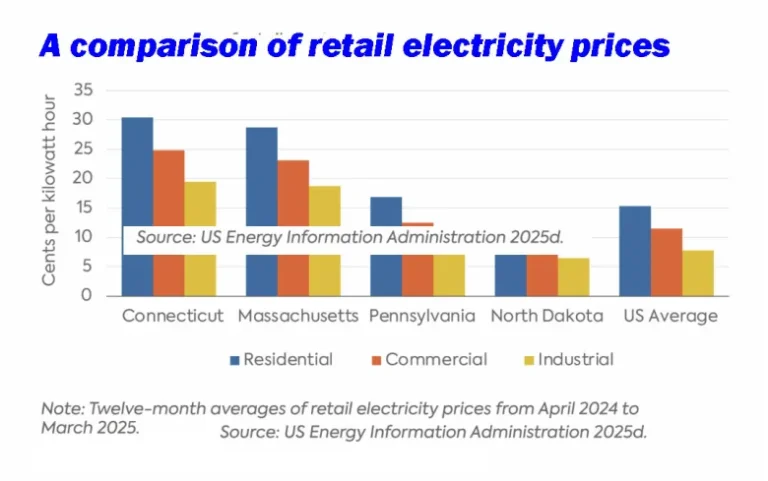Could a strategic lithium reserve kickstart US supply chain development?
NEW YORK -- A strategic lithium reserve is being mooted as a solution to stabilize volatile prices that have hindered American mining projects, allowi
Current Access Level “I” – ID Only: CUID holders, alumni, and approved guests only
Op-eds & Essays by James Stock • November 23, 2016
http://thehill.com/blogs/congress-blog/energy-environment/307397-a-bipar…
Today, the Obama Environmental Protection Agency did the incoming Trump administration a big favor – seriously. In establishing the 2017 obligations under the Renewable Fuel Standard (RFS), the EPA finally passed a major RFS milestone that will allow moving beyond the fruitless and acrimonious debate between big corn and big oil that have plagued RFS policy.
At last, policymakers can focus on the real promise of the RFS: the domestic second-generation biofuels that create American jobs, enhance energy security, and significantly reduce carbon emissions.
The Energy Independence and Security Act (EISA) of 2007 established ambitious goals for blending biofuels into the nation’s surface transportation fuel supply. Those statutory goals include a 15 billion gallon cap on conventional biofuel, which is nearly all corn ethanol, to be achieved in 2015. EPA twice delayed reaching that goal, and based on EPA’s June proposal for the 2017 rule, it looked like that goal would be postponed again.
The reason EPA repeatedly scaled back the conventional target was the decline in gasoline consumption, combined with the so-called E10 blend wall which makes it difficult to blend more than 10 percent ethanol into the nation’s gasoline supply. The failure to hit the 15 billion gallon statutory cap deeply irked the corn ethanol industry, and the petroleum industry dug in its heels on the E10 blend wall. The result was RFS meets Groundhog Day. The corn-oil debate crowded out other RFS policy issues that are more important in the long run, and until recently it looked like this situation would drag on into 2017.
But developments since June, including a big jump in October in the Energy Information Administration’s projection of 2017 gasoline demand, comfortably raised the conventional biofuel capacity of the 2017 fuel supply to 15 billion gallons. EPA updated its spreadsheets, and the 2017 final rule hits the statutory cap.
One reaction of achieving the RFS goals for first-generation fuels would be a relieved decision to freeze the program and move on. But that would be a mistake.
In addition to goals for first generation fuels, the EISA laid out ambitious goals for second-generation biofuels. In part for technological reasons, in part because of the Great Recession, and in part because of the first-generation policy distractions, second-generation fuels have been very slow to scale up. But promising technology exists, and the first commercial-scale cellulosic ethanol plants have now been built in the Midwest.
Refocusing the RFS on promoting second-generation fuels such as cellulosic ethanol provides an opportunity for bipartisan agreement. Because second-generation biofuels are grown and refined in America, they promote energy independence. They create jobs in rural America. And unlike corn ethanol, which split the environmental community, second generation biofuels have very low greenhouse gas emissions and generally do not use feedstocks that could otherwise be used for food.
A pivot to a forward-looking biofuels policy must address a number of central challenges.
First, investors in second generation technologies must have certainty that there will be demand for their product.
Second, because those technologies are nascent, they must be adequately supported early on through the RFS and other programs. For example, this means ensuring that the tradeable credits they generate (RINS) have reliable value, and that there are other methods for supporting the production of initial volumes of fuel.
Third, there must be room in the fuel supply for additional volumes of second generation fuels. Because cellulosic ethanol is the most promising low-GHG second generation fuel, this means supporting additional infrastructure investments to increase the amount of ethanol in the fuel supply.
Lastly, the RFS compliance costs associated with first-generation fuels must remain reasonable, so that the financial incentives can be focused on second-generation fuels. For example, targets for first-generation fuels should be informed by the monetary value of their reductions to GHG emissions and to energy security.
Promoting second-generation biofuels requires clear and reliable policy signals, and meaningful and efficient price incentives – especially for new and emerging technologies. It also requires support for fueling infrastructure that can provide higher blends of ethanol to the marketplace and ensuring robust competition to control costs and keep our focus on the fuels that matter most for the future. Many steps can be taken under existing law through the RFS, but the effectiveness of the program could be improved through bipartisan legislation.
The incoming administration now has a unique opportunity to make progress on the second-generation fuels that so far have been lost in the noise.
On November 6, 2025, in the lead-up to the annual UN Conference of the Parties (COP30), the Center on Global Energy Policy (CGEP) at Columbia University SIPA convened a roundtable on project-based carbon credit markets (PCCMs) in São Paulo, Brazil—a country that both hosted this year’s COP and is well-positioned to shape the next phase of global carbon markets by leveraging its experience in nature-based solutions.

Connecticut needs an honest debate, and fresh thinking, to shape a climate strategy fit for today, not 2022.


Full report
Op-eds & Essays by James Stock • November 23, 2016